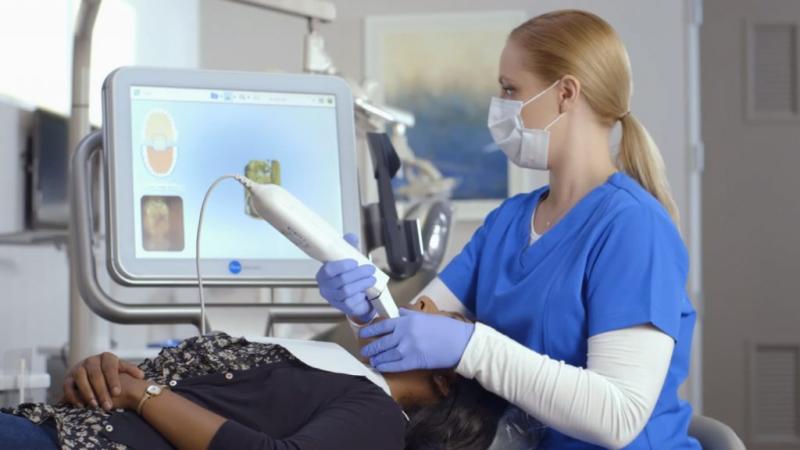Intraoral scanning and inspection systems have revolutionized modern dentistry by introducing a digital approach to capturing detailed images of patients' oral cavities. These systems provide highly accurate 3D models of teeth and gums, replacing the traditional impression techniques that were often uncomfortable and time-consuming. The rapid evolution of these technologies has expanded their application from diagnostics to treatment planning, orthodontics, and prosthodontics, significantly improving patient care. Today, dental professionals rely on intraoral scanners to enhance precision, reduce chair time, and deliver better clinical outcomes.
Understanding the Functionality of Intraoral Scanning Devices in Dentistry
The core function of an Intraoral Scanning And Inspection System device is to acquire a digital representation of the oral structure using optical technology. These devices use light-emitting lasers or structured light combined with optical sensors to capture the surface geometry inside the mouth. High-resolution cameras capture the minute details of teeth and soft tissues, converting them into a 3D digital image almost instantaneously. This digital data can then be used for computer-aided design and manufacturing (CAD/CAM) to fabricate dental restorations such as crowns, bridges, dentures, and aligners with exceptional accuracy.
Intraoral scanners not only improve the quality of impressions but also eliminate the need for messy and uncomfortable impression materials. The digital scans facilitate immediate review and adjustments, reducing errors and the need for repeat visits. Additionally, the integration of cloud platforms enables easy storage and sharing of scan data between dental professionals and laboratories, streamlining workflow and enhancing collaboration.
Key Benefits Driving Adoption of Intraoral Scanning And Inspection Systems
The adoption of intraoral scanning technologies in dental practices has grown rapidly due to multiple clinical and operational benefits. First and foremost, these systems enhance patient comfort by replacing traditional impression trays that can trigger gag reflexes or discomfort. The scanning process is faster, which reduces total procedure time and increases patient throughput.
Accuracy is another driving factor, as intraoral scanning achieves micron-level precision, minimizing distortions common with conventional impressions. This translates to better-fitting restorations and fewer adjustments necessary after delivery, which enhances patient satisfaction and lowers treatment costs for dental offices. Moreover, the digital nature of the scan data supports advanced treatment planning tools, enabling simulation and visualization of outcomes for patients, improving communication and acceptance rates.
The ability to store and retrieve digital records simplifies case documentation and makes long-term patient monitoring more efficient. These advantages highlight why intraoral scanning and inspection systems are integral to modern dental diagnostics.
Technology Trends in Intraoral Scanning Solutions
The intraoral scanning and inspection system market has witnessed continuous technological innovation along with expanding applications in dentistry. Developments such as improved scanner portability, faster scan speeds, and enhanced image resolution have made these devices more accessible and user-friendly. Furthermore, integration with artificial intelligence (AI) and machine learning algorithms is enabling automated detection of oral pathologies and anomalies directly from scan data, supporting early diagnosis and preventive care.
Connectivity enhancements are also noteworthy, as manufacturers develop solutions that seamlessly connect intraoral scanners with dental practice management software and digital dental laboratories. This interoperability facilitates smooth end-to-end workflows from scanning to manufacturing and fitting of dental restorations.
On the commercial side, price reductions and flexible financing options have made these systems more attainable for small and mid-sized dental clinics, expanding their reach globally. Key product categories include handheld wand scanners, compact desktop systems, and specialized devices for orthodontic and implant procedures.
Commercial Applications and Purchasing Considerations for Intraoral Scanning Devices
Dental clinics and laboratories aiming to invest in intraoral scanners must consider several commercial factors to maximize the return on investment. Beyond initial cost, aspects such as scanner accuracy, ease of integration with existing practice management systems, software compatibility, and customer support services are critical. Clinicians should evaluate scanners based on their specific clinical applications, like restorative dentistry, orthodontics, or implantology, ensuring the technology meets their procedural requirements.
Leasing options and price-performance comparisons are increasingly influential in purchasing decisions, as providers seek cost-effective ways to upgrade their diagnostic equipment without incurring large upfront expenses. Additionally, training and technical support offerings impact adoption success, emphasizing the importance of vendor reliability and service quality.
With intraoral scanning systems becoming essential tools in digital dentistry workflows, understanding their commercial benefits and selection criteria is vital for healthcare providers aiming to enhance operational efficiency and treatment precision.
_
Get This Report in Japanese Language -口腔内スキャン・検査システム市場
Get This Report in Korean Language -구강 내 스캐닝 및 검사 시스템 시장
Read More Articles Related to this Industry –
Nanofiber Applications in Medical Devices: Revolutionizing Healthcare
Camera Modules in Medical Devices: Revolutionizing Diagnostics and Treatment
About Author:
Priya Pandey is a dynamic and passionate editor with over three years of expertise in content editing and proofreading. Holding a bachelor's degree in biotechnology, Priya has a knack for making the content engaging. Her diverse portfolio includes editing documents across different industries, including food and beverages, information and technology, healthcare, chemical and materials, etc. Priya's meticulous attention to detail and commitment to excellence make her an invaluable asset in the world of content creation and refinement.
(LinkedIn- https://www.linkedin.com/in/priya-pandey-8417a8173/)
